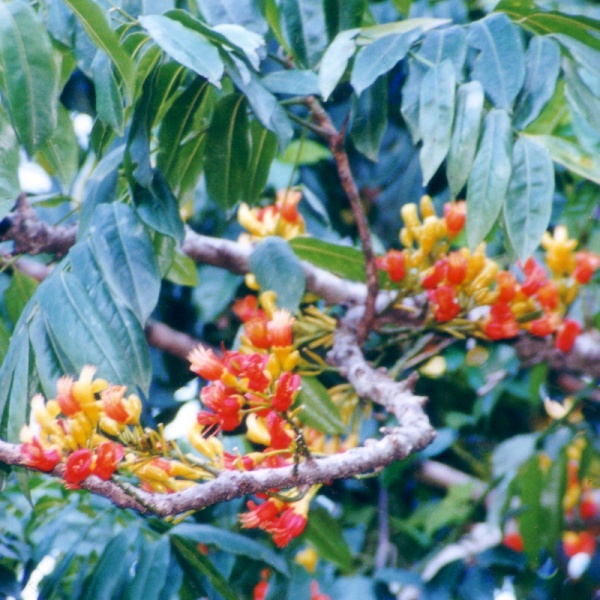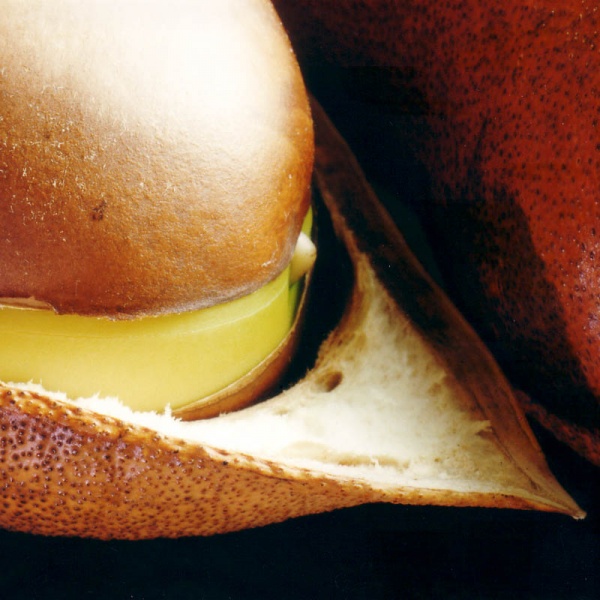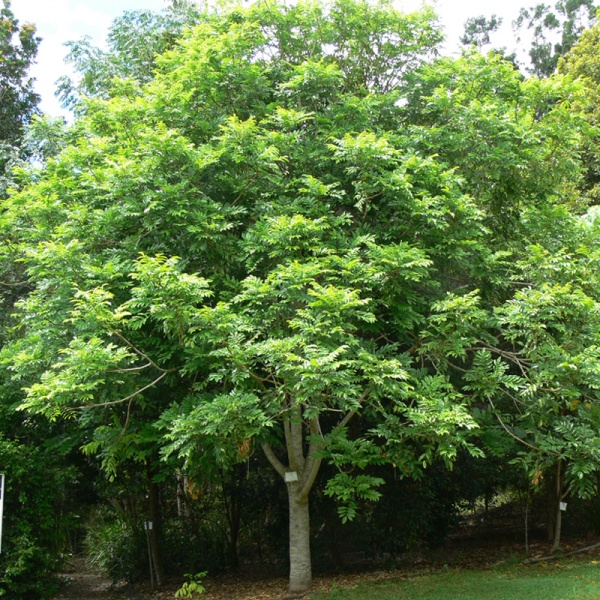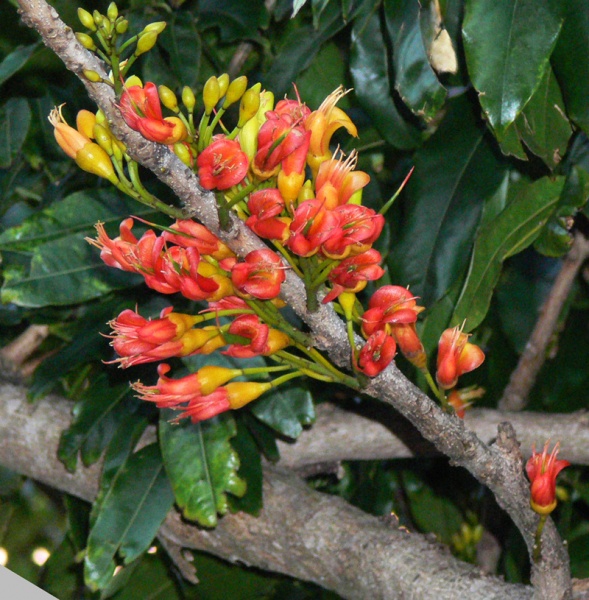Scientific Name: Castanospermum australe
-
Pronunciation:cass-tan-oh-SPERM-um aus-TRALE
-
Common Name:Black bean, Moreton Bay Chestnut





-
Derivation:Castanospermum: Spanish, castena - the chestnut (likeness to chestnut seeds). ||australe: southern
-
Type:
-
Family:FABACEAE
-
Flowers:Orange, red, arising from old leaf scars, spring, summer
-
Fruit:Pod, large, woody, brown. Seeds POISONOUS.
-
Vegetation Type:Rainforest. Good moisture in well-drained situations. Riverine scrub.
-
Species List:Kennilworth Fig Tree Walk, Bush food, Bush medicine, NLTalks2010, Regional Ecosystem 12.3.1., Upper Yandina Creek, Kin Kin Scrub, Kin Kin Arboretum, Heritage Park,
Cultural Notes
TAKE CARE! Some information about bush foods and medicines may be anecdotal. Correct identification and preparation is essential:
Timber: Highly regarded as cabinet timber. Used for electrical switchboards because of high resistance to passage of electric current
Bush food: Aborigines soaked
Identification Notes
Straight unbranched trunk. Leafy crown. ||Leaf: compound, dark green, pinnate with 8-17 leaflets.||Very young shoots covered with rust-coloured hairs.||Inner bark and green branchlets smell like freshly cut pumpkins (W.D.Francis)||
Associated Fauna
Nectar attractive to parrots, possums and bats. ||Butterfly attracting. Butterfly host plant: Pencilled blue. ||
Landscaping Notes
Landscaping potential in suitable areas. Noosa Council Preferred Species list.||Indoor pot plant potential. ||Successfully propagated by Tin Can Bay City Farm Nursery|Successfully propagated by Florabunda Bushcare nursery, Woombye|Successfully propogated by Noosa & District Landcare.|Successfully propagated by Mooloola Native Nursery||Successfully propagated by Barung Landcare||


